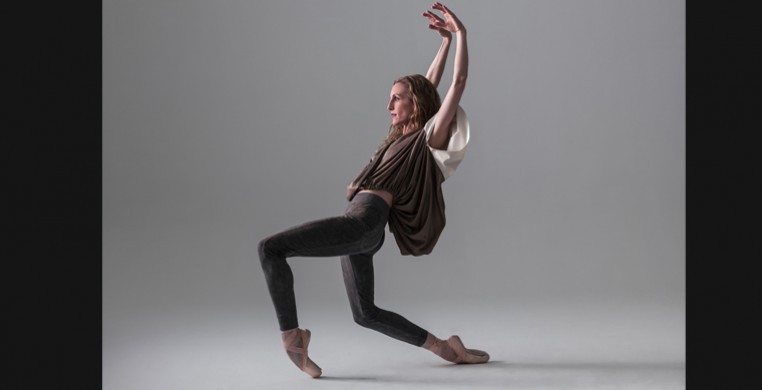Simplicity reigns in Wendy Whelan’s court. She may be ballet royalty, but no hoopla or special fanfare accompanies “Restless Creature,” a straightforward suite of four elegant duets for herself and her four male consorts, each of whom choreographed distinct segments for her. Lighting designer Joe Levasseur’s stark black box frame and lit rectangular stage floor focused all attention on the dancing in each piece, which played in succession without bows until the final company curtain call. The casual ease of Karen Young’s no nonsense costuming added to the ambiance of the evening as a soiree for new movement.
After 30 years with the New York City Ballet, at the age of 46 and dancing with the elasticity of someone half her age, Whelan launches the next phase of her career barefoot. Called “America’s greatest contemporary ballerina” by the NY Times, it would be riveting to watch her execute even the barest minimum of movement, but of course the four pieces demanded a good deal more of her and her four dance partners
Alejandro Cerrudo’s “EGO ET TU” (2013) was a double treat for fans of both Whelan and Hubbard Street Dance Chicago’s resident choreographer. Cerrudo’s opening solo in this modern day love duet gave us a rare opportunity to see him dancing his own highly distinctive choreography. The startling clarity of gesture in every inch of his body underscored his love affair with negative space, that is, the places around and in between the contours of the body. Turning himself into liquid spatial glue, the contortions, undulations, and weaving of limbs, torso, and head seamed to fold the space around him and ingest it as he receded into the landscape he had formed expressly for Whelan to enter. Whelan’s emotionally poignant solo set the two dancers on a journey into a spatial marriage of action and reaction, foreheads touching, rebounding, and re-navigating their course of exploration, establishing a depth of intimacy in the ensuing movement conversation that built to their culminating disappearance, hand in hand, upstage and into the darkness. Cerrudo’s choreography was especially suited to unleashing and elevating the superb dance artistry of both performers. A delight to behold.
In stark contrast to Cerrudo’s emotionally rich duet, Joshua Beamish’s “CONDITIONAL SENTENCES,” (2015) set to Bach’s Piano Partita No. 2 in C minor, defined the dancers’ relationship with a geometrically complex grid of balletically-inspired variations. The precision movement was exquisitely sensitive to the nuances of rhythm, duration, accent, and melody, an ingenious visualization of the music. The seemingly dispassionate coupling evolved into something curiously connected, albeit in their own quirky, mathematical way, a kind of cubist love affair filled with unexpected isolations and obtuse angularity.
It’s hard to know what to make of Kyle Abrahams’ “THE SERPENT AND THE SMOKE” (2013), which began with a series of quick wiggles and gyrations against slow, syrupy folding. Abraham’s flashes of almost angry energy set up an adversarial relationship between the two dancers that never fully evolved. At one point Abraham executed a series of intriguing barrel turns on the floor. Whelan supported Abraham in a back arch, and the two danced a minimalist sequence in silence. A third sequence shined lights into the audience, obscuring the dancers from view altogether. While there were interesting elements here and there, the piece was disjointed. Much of the movement was repetitive. The whole appeared unfocused and lacked the choreographic voice and substance one has come to expect from Abraham. Even so, Whelan, as mentioned above, need only breathe on stage to command our fascination, but this may have been a trap for Abraham, whose minimalist moves were a bit too minimal to sustain interest.
In “FIRST FALL” (2012) by Brian Brooks, the wings disappeared to reveal the naked backstage for the final duet. Brooks makes the most of Philip Glass’s driving serial music to explore relationship through weight, leverage, and the act of falling and catching each other, but the best part of the piece was the final segment in silence. Here Whelan repetitively walked onto Brooks’ back, and melted across him and onto the floor in a circular pattern that culminated in a final, liquidy coalescence of the two bodies.
Whelan’s noble intention is to use her resources as an artist to foster new work by outstanding choreographers. Her stature lends integrity to the project. It will be interesting to see what further explorations come of her efforts.
--Lynn Colburn Shapiro, editor

